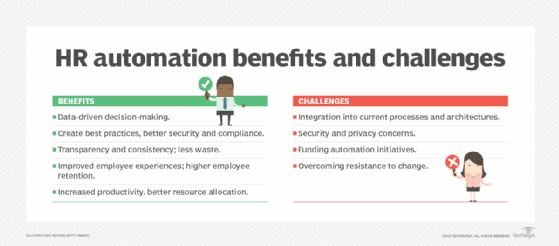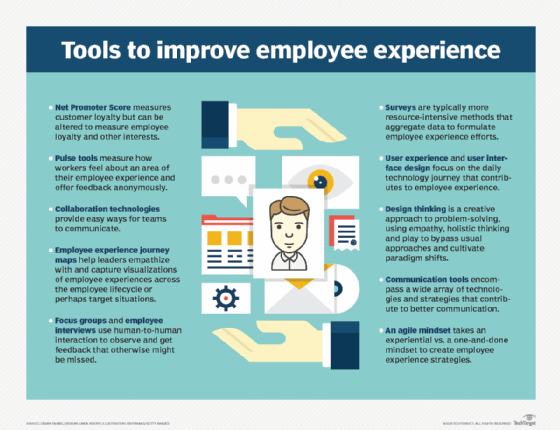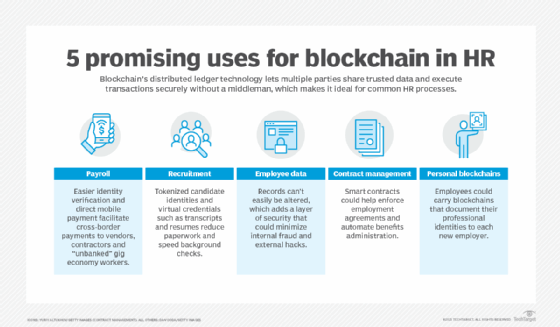digital HR
What is digital HR?
Digital human resources (HR) is the digital transformation of HR services and processes through the use of social, mobile, analytics and cloud (SMAC) technologies. Digital HR represents a sea change in both the approach to and execution of HR technology although it takes place on a continuum as organizations progress.
Digital HR transforms the HR function from paper-based, reactive and time-consuming to digital-first, mobile and optimized, improving both employee experience and organizational success. Its goals include increasing employee engagement and retention and measurably augmenting the success of an organization by continually transforming in an agile way.
Most organizations are only beginning to consider digital HR and work on a strategy, though leading companies are embracing this new way of conducting HR functions, processes and services. As with the digital transformation of business in general, digital HR is considered by industry analysts to be a critical part of the digital transformation of business in general.
How digital HR works
Digital HR is also referred to as the digitization of HR. It takes a cloud-first, mobile-first, data-driven, collaborative, iterative approach to HR technology and services with the idea of delivering on business strategy and employee experience. It uses cloud human capital management (HCM) and talent management systems that feature easier deployment, automatic upgrades, fewer technical challenges, better HR automation, demonstrable HR improvements, cost savings and an increased ability to integrate modern technologies.
Digital HR uses data and analytics to measure progress at every stage of the employee lifecycle, from recruitment to learning and development to retention and offboarding, with the intention of pivoting quickly when a given strategy doesn't work. It uses lightweight technology to support a focus on agile change, with tools such as pulse surveys and employee Net Promoter Scores.
Digital HR also capitalizes on social media, including social media recruiting and, where appropriate, social media in learning strategies. Digital HR embraces the consumerization of HR, reimagining HR self-service as a truly user-friendly experience for employees.
Digital HR isn't just about transforming HR technologically. One of the most important goals of digital HR is to take a strategic, proactive approach to HR that aligns all HR functions and goals with business goals and partners with other stakeholders to determine how best to do this.

How does digital HR transform human resources?
Digital HR integrates digital technologies into HR processes, transforming the human resources landscape in several ways, including the following:
- Enhanced efficiency. By automating routine and time-consuming tasks, digital HR enables HR departments to operate more strategically, focusing on higher-value activities. Digital HR tools also let managers foresee potential challenges and devise preemptive solutions. Automated systems reduce the likelihood of errors in tasks such as report writing and financial management.
- More data-driven insights and compliance. Digital HR opens up new possibilities for gathering and analyzing data, helping HR to make informed decisions and drive business strategies based on real-time insights. With constantly evolving regulations, digital HR systems ensure compliance and reduce the risk of legal issues. Advanced security measures in digital HR tools can help safeguard sensitive employee data, building trust and compliance.
- Better cost efficiency and processes. Digital HR simplifies and automates routine tasks, allowing HR professionals to concentrate on strategic initiatives that impact the bottom line. Meanwhile, automation and digital tools significantly reduce costs associated with manual processes and paperwork, contributing to overall budget efficiency.
- Improved employee experience. Digital HR provides employees with self-service tools, fostering quicker response times and greater transparency. This enhances the overall employee experience. Platforms that mimic social media facilitate collaboration and communication among employees, making daily tasks more engaging and less isolating. Meanwhile, analysis-driven onboarding programs tailor the induction process to meet individual needs, making it more effective and user-friendly.

How to implement digital HR
Organizations looking to implement digital HR should follow these key steps:
- Review existing systems. Begin by evaluating current HR processes to identify areas that require improvement or a complete transformation. This step is crucial to understanding the scope of digital integration needed and other HR technology challenges.
- Set clear objectives. Define what success looks like for a digital transformation. This could include enhanced employee engagement, streamlined workflows and improved data analytics capabilities.
- Develop a strategic plan. Outline the steps and technologies required to achieve the objectives. This plan should align with the overall business strategy to ensure coherence and support from all departments.
- Select appropriate technologies. Choose digital tools and software that fit the identified needs, such as artificial intelligence (AI) for talent management and automation software for administrative tasks.
- Implement in phases. Roll out the digital transformation in manageable phases. Start with the most critical areas before expanding to other parts of the HR function.
- Monitor and adapt. Continuously monitor the implementation process and be ready to make necessary adjustments. This adaptability is key to dealing with unforeseen challenges during the transformation.
- Effective communication. Keep all stakeholders informed about the changes and the benefits they bring. Transparency is essential to gain the support of the HR team and the wider organization.
- Training and support. Provide comprehensive training for HR professionals and other employees to ensure they're equipped to use the new digital tools effectively.
- Enhance security measures. Implement security protocols to protect sensitive employee data. This includes secure access controls and regular security audits.
- Ensure compliance. Stay updated with data protection regulations and ensure that all digital HR tools comply with these laws to avoid legal complications.
Benefits of digital HR
Digital HR can confer several advantages on organizations, such as the following:
- HR alignment. HR processes use analytics to determine what is and isn't aligned with the overall HR strategy and framework and ultimately improving HR overall.
- Streamlined systems. Duplicative systems are identified and streamlined; for example, HR and learning systems might be combined into one portal.
- Mobile first. A mobile-first strategy can deliver a better employee experience to job candidates and workers. It provides HR self-service and other easy-to-use processes that improve employee engagement and retention.
- Agility. Taking an agile approach to HR strategy, processes and tools, where iterative projects are rolled out quickly. This approach lowers the risk of strategy and technology failure that can't be easily changed.
- Adoption. By using design thinking across SMAC technology implementations, HR can ensure that employees actually adopt tools. Where these aren't working, design thinking can help HR leaders and professionals quickly change course.
- Smooth processes. Cloud HCM and talent management systems can streamline processes across the employee lifecycle, lower costs and enable integration of modern tools and technologies, such as AI.
Challenges of digital HR transformation
There are several challenges involved with digital HR. The most critical include the following:
- Outdated HR processes and resistance to change. Many organizations face challenges with outdated HR processes and resistance to cultural change. To address this, it's crucial to develop agile HR processes and foster a culture that embraces digital innovation. Effective change management strategies and clear communication can mitigate resistance and encourage adaptability.
- Technological and infrastructure setbacks. Inadequate technological infrastructure can hinder the implementation of digital HR. Organizations should invest in modern HR processes and ensure seamless integration of new technologies to avoid disruptions and enhance efficiency. Regular employee training and development programs help HR professionals to effectively use new digital tools.
- Data security and compliance. Ensuring data security is a challenge during the digital transformation of HR. Organizations must enhance security measures and ensure that all digital HR tools comply with data protection regulations to protect sensitive employee data and avoid legal complications.
- Skill gaps and workforce planning. There are bound to be shortfalls in the skills needed and knowledge base available with implementing digital HR systems. Upskilling and reskilling the HR workforce is essential to managing this shift. Strategic workforce planning and investment in skills development are crucial to prepare HR teams for new challenges and ensure they can use digital tools for better decision-making and performance management.
- Internal support and stakeholder engagement. Lack of employee buy-in and support from managers can derail digital transformation initiatives. It's important to involve all stakeholders early in the transformation process, using internal service-level agreements to establish accountability and drive adoption of new practices. Regular updates and inclusive decision-making can build trust and ensure everyone is aligned with the organization's digital HR strategy.
Digital HR and digital disruption
Digital HR is part of the greater landscape of digital disruption. The improvements to digitally based and mobile technologies, and the success of early adopters, including cloud-first startups that are disrupting old business models, have exerted pressure on more traditional businesses to move some legacy on-premises software to cloud systems. These systems support modern business processes and a better customer experience. Enterprise software vendors support and even compel these shifts with more cloud offerings, not just in enterprise resource planning systems generally but in cloud HCM and talent management software.
Other factors driving disruption are the growing proliferation of AI and lightweight collaboration, analytics and other tools. In addition, this trend is responding to the exponential rise of instant-satisfaction culture, such as learning new talents from YouTube, instant feedback from social media and the spread of delivery services, as well as the billions of internet and mobile users.
Employees across the generations bring their consumer experience to the workplace and expect its systems, including HR systems, to deliver the same quality of experience. Those expectations are increasing as Generation Z, considered to be the first true digital natives, enter the workforce.
Future trends and technologies in digital HR
Several emerging technologies and trends are driving the future of digital HR. The most important ones are the following:
- AI and machine learning integration. The integration of AI and ML technologies is set to revolutionize HR processes. They will automate decision-making and enhance data analytics capabilities. AI will enable more personalized HR services, from recruitment to onboarding and ongoing employee engagement, adapting processes in real time to meet individual needs.
- Virtual reality (VR) and augmented reality (AR). With the metaverse, HR can create immersive and interactive environments for remote training and collaboration, enhancing the way teams interact and learn. Using VR and AR for recruitment processes and onboarding will provide new, engaging ways to attract and integrate employees into the company culture.
- Gamification and employee engagement. Gamification is increasingly being used to make learning and development programs engaging and effective, driving higher participation and retention rates. Incorporating game-like elements into performance management can increase motivation and improve the measurement of employee achievements in a more dynamic and ongoing manner.
- Hybrid work models. These models combine remote and on-site arrangements to optimize employee productivity and satisfaction. They can lead to higher employee performance. However, HR policies must adapt to support the different work environments, ensuring all employees feel engaged regardless of their physical location.
- Blockchain and security advances. Blockchain technology improves the security of HR data, facilitating encrypted transactions and protecting sensitive information. This technology also promises greater transparency in data handling, ensuring that employee information is managed securely and with integrity.

Digital HR is changing the workplace. Make sure you understand the emerging digital employee experience market.






